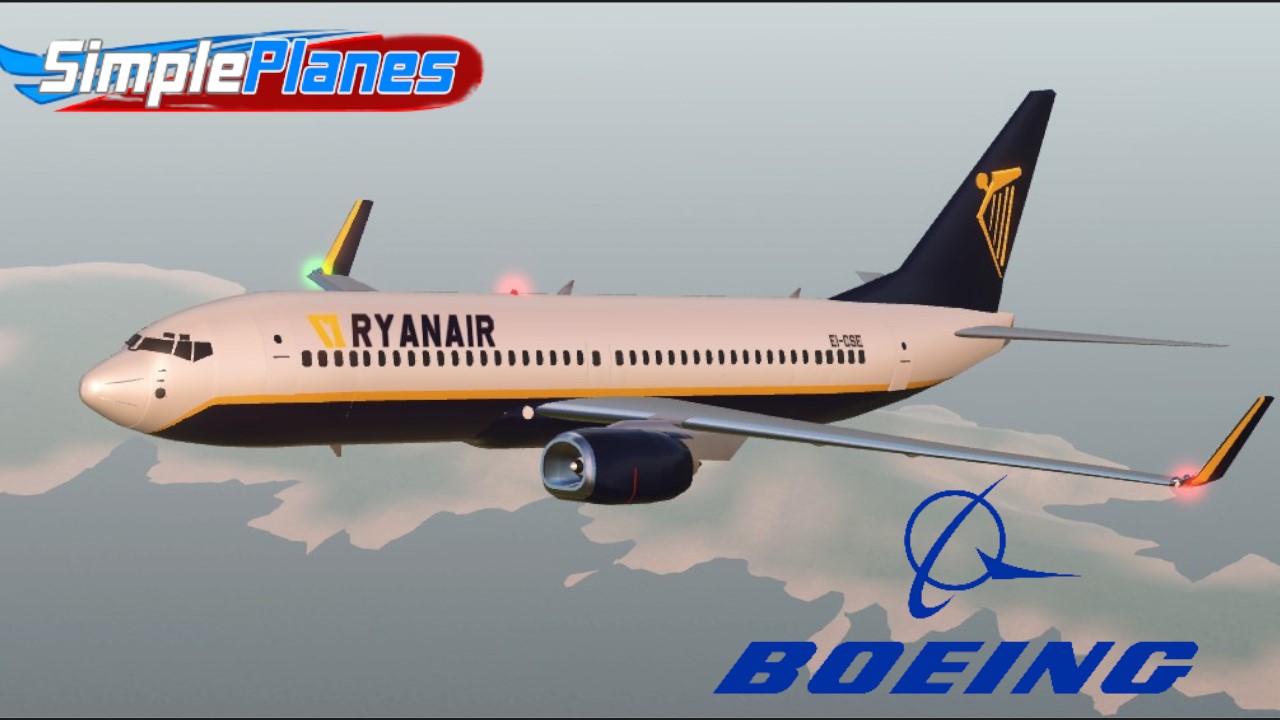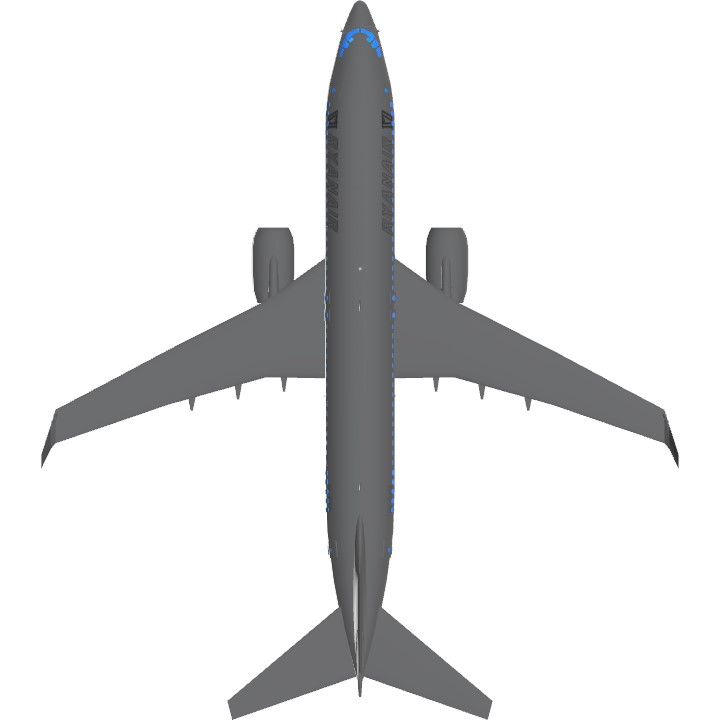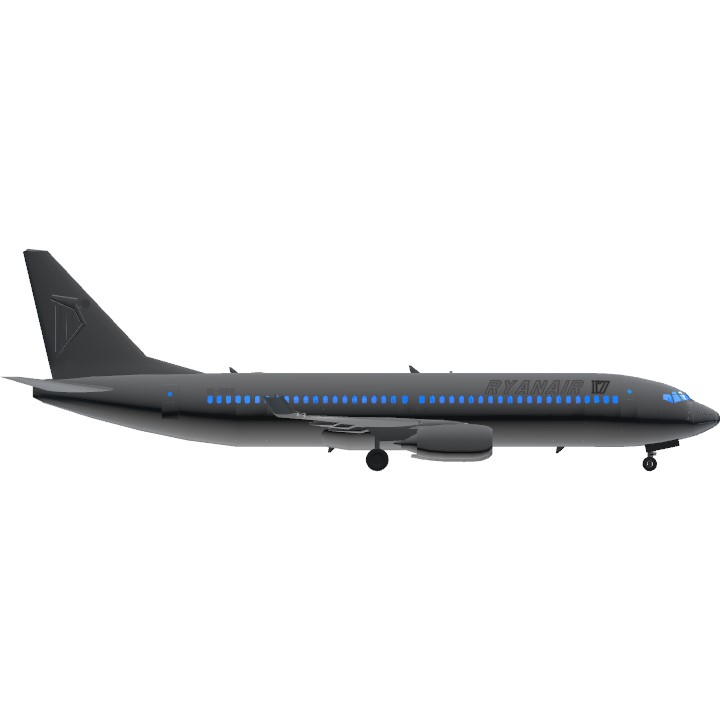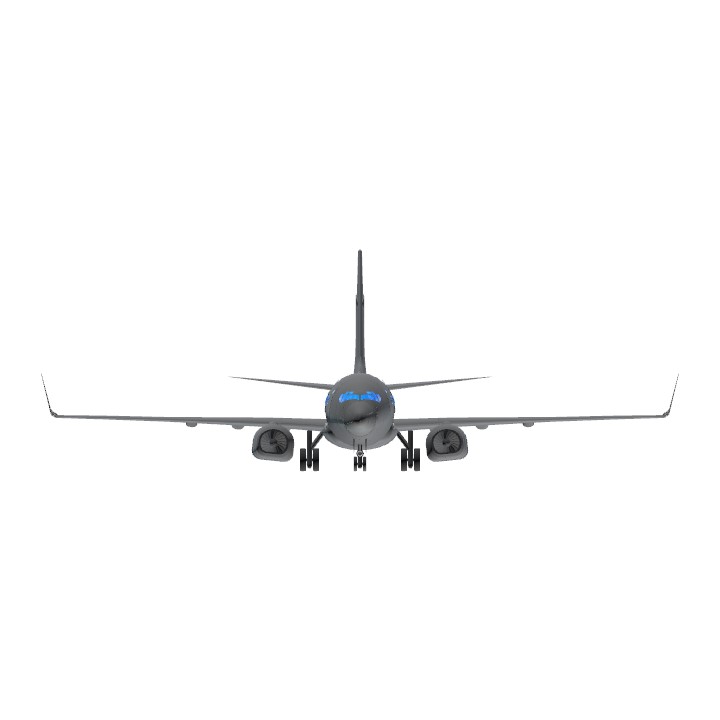[EI-CSE] Ryanair (2000s livery) BOEING 737-8AS [250 Followers special]
Long time folks <3...
1.3 years ago, I made y'all a Ryanair 737-200 for my 50 followers special, why not do it again
INSTRUCTIONS:
Note: This Aircraft comes with a walker that I made to explore the Interior, it's advised to use only when Aircraft is stationary
AG-1/2 for engines
AG-3 or lights
AG-4 for parking brake
AG-5/6 for rev thrust
AG-7 for spoilers
AG-8 for Nav lights
NOTAM:-CAUTION: Yaw damper offline
-Around 100% fuel loaded
-Cockpit lock In-op
The 737NG
The Boeing 737 Next Generation, commonly abbreviated as 737NG, or 737 Next Gen, is a twin-engine narrow-body aircraft produced by Boeing Commercial Airplanes. Launched in 1993 as the third generation derivative of the Boeing 737, it has been produced since 1997.[4]

The 737NG is an upgrade of the 737 Classic (-300/–400/–500) series. Compared to the 737 Classic, it has a redesigned wing with a larger area, a wider wingspan, greater fuel capacity, and higher maximum takeoff weights (MTOW) and longer range. It has CFM International CFM56-7 series engines, a glass cockpit, and upgraded and redesigned interior configurations. The series includes four variants, the -600/–700/–800/–900, seating between 108 and 215 passengers. The 737NG's primary competition is the Airbus A320 family.
As of June 2024, a total of 7,124 737NG aircraft had been ordered, of which 7,110 had been delivered, with remaining orders for two -800, and 12 -800A variants. The most-ordered variant was the 737-800, with 4,991 commercial, 191 military, and 23 corporate, or a total of 5,205 aircraft. Boeing stopped assembling commercial 737NGs in 2019 and made the final deliveries in January 2020.[2] The 737NG is superseded by the fourth generation 737 MAX, introduced in 2017.
Development
The first 737NG, a 737-700, was rolled out on December 8, 1996, and first flew on February 9, 1997, it was later delivered to Southwest Airlines
Background
When regular Boeing customer United Airlines bought the more technologically advanced Airbus A320 with fly-by-wire controls, this prompted Boeing to update the slower, shorter-range 737 Classic variants into the more efficient, longer New Generation variants.[5] In 1991, Boeing initiated development of an updated series of aircraft.[6] After working with potential customers, the 737 Next Generation (NG) program was announced on November 17, 1993.[7]
Testing
The first NG to roll out was a 737-700, on December 8, 1996. This aircraft, the 2,843rd 737 built, first flew on February 9, 1997, with pilots Mike Hewett and Ken Higgins. The prototype 737-800 rolled out on June 30, 1997, and first flew on July 31, 1997, piloted by Jim McRoberts and again by Hewett. The smallest of the new variants, the -600 series, is identical in size to the -500, launching in December 1997 with an initial flight occurring January 22, 1998; it was granted FAA certification on August 18, 1998.[7][8] The flight test program used 10 aircraft: 3 -600s, 4 -700s, and 3 -800s.[7]
Enhancements
In 2004, Boeing offered a Short Field Performance package in response to the needs of Gol Transportes Aéreos, which frequently operates from restricted airports. The enhancements improve takeoff and landing performance. The optional package is available for the 737NG models and standard equipment for the 737-900ER.
In July 2008, Boeing offered Messier-Bugatti-Dowty's new carbon brakes for the Next-Gen 737s, which are intended to replace steel brakes and will reduce the weight of the brake package by 550–700 pounds (250–320 kg) depending on whether standard or high-capacity steel brakes were fitted. A weight reduction of 700 pounds (320 kg) on a 737-800 results in 0.5% reduction in fuel burn.[9] Delta Air Lines received the first Next-Gen 737 model with this brake package, a 737-700, at the end of July 2008.[10]
The CFM56-7B Evolution nacelle began testing in August 2009 to be used on the new 737 PIP (Performance Improvement Package) due to enter service mid-2011. This new improvement is said to shave at least 1% off the overall drag and have some weight benefits. Overall, it is claimed to have a 2% improvement on fuel burn on longer stages.[11]
Credits: Wikipedia
Photodump









Generic Version
Thanks for 250 followers
CYA!
Specifications
Spotlights
- Mal0ne 2 months ago
- GalacticaAsia 2 months ago
- Marulk 2 months ago
- MAPA 2 months ago
- TheMouse 8 days ago
- Zerkk 2 months ago
- XProAerospaceAircrafts 2 months ago
General Characteristics
- Successors 3 airplane(s) +133 bonus
- Created On Windows
- Wingspan 113.1ft (34.5m)
- Length 127.7ft (38.9m)
- Height 39.5ft (12.0m)
- Empty Weight 90,416lbs (41,012kg)
- Loaded Weight 136,546lbs (61,936kg)
Performance
- Power/Weight Ratio 0.416
- Horse Power/Weight Ratio 0.012
- Wing Loading 33.9lbs/ft2 (165.5kg/m2)
- Wing Area 4,028.3ft2 (374.2m2)
- Drag Points 13865
Parts
- Number of Parts 1129
- Control Surfaces 0
- Performance Cost 6,103





VARIANTS:
Lower part Version
Mobile version
Generic
TAGS
@LunarEclipseSP
@DatFiat126Fan19
@YuiChan
@LM0418
@L3FT2R1GHT
@FlatterGuy
@Kenzar
@Pakkoyan
@MIGFOXHOUND31BSM26
@Mal0ne
@superminion333 I'm working on an ethiopian airlines livery with a startup procedure/checklist
Can you make new livery please 🥺🥺
Bro i make a butter with this one
Happy 250 children
Back in my day there wasn’t a airline called ryanair
100 50 40 30 20 10 retard crashed
this is so cool oh my god
B U T T E R
crashGreat job!